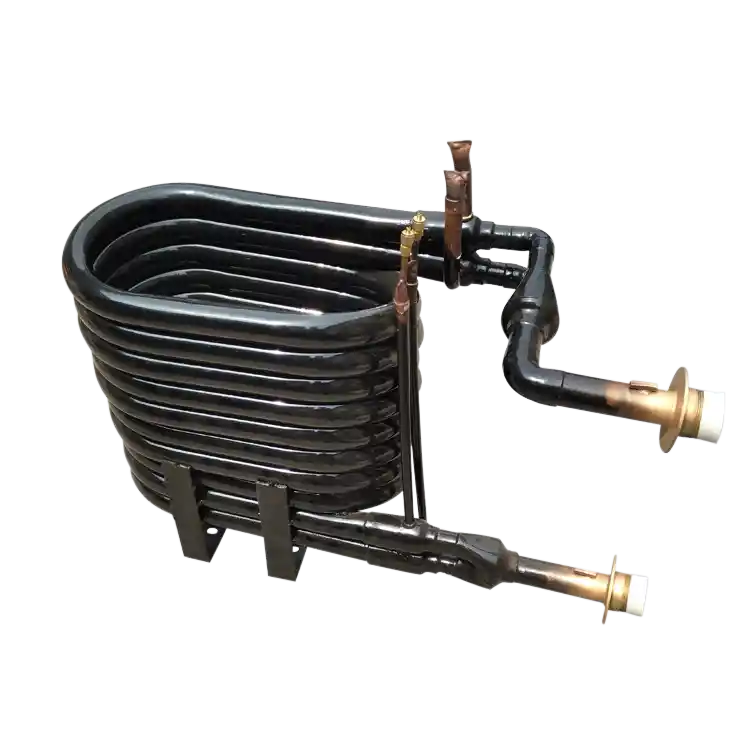1. Introduction
Pressure and leakage testing is a crucial quality control measure in the production process of coaxial heat exchangers. This testing ensures the integrity and reliability of the heat exchanger by verifying its ability to withstand the specified operating pressures without any leaks. This article explores the significance of pressure and leakage testing, testing procedures, test equipment, and the importance of ensuring a tight seal in coaxial heat exchangers.
2. Importance of Pressure and Leakage Testing
Pressure and leakage testing serves several important purposes:
2.1 Performance Verification
By subjecting the coaxial heat exchanger to the specified operating pressures during testing, its performance under actual working conditions can be evaluated. This verification ensures that the heat exchanger will function optimally when installed in its intended application.
2.2 Leak Detection
Leakage is a critical issue that can compromise the heat exchanger’s performance and safety. Pressure and leakage testing help identify any leaks in the system, allowing for timely repairs or replacements before the heat exchanger is put into service.
2.3 Quality Assurance
Pressure and leakage testing are essential quality control measures that ensure the heat exchanger meets the required standards and specifications. It provides assurance to customers that the product they receive is reliable and free from defects.
3. Testing Procedures
The pressure and leakage testing procedures for coaxial heat exchangers typically involve the following steps:
3.1 Preparation
Before testing, the heat exchanger must be properly cleaned and inspected to ensure it is free from debris, contaminants, and any visible defects that could affect the test results. The connections and seals should also be inspected for tightness and integrity.
3.2 Test Setup
The heat exchanger is connected to a test rig or setup that allows for the controlled application of pressure. The setup may include pressure gauges, control valves, and a source of pressurized fluid, such as air or water.
3.3 Pressure Application
Gradually increasing pressure is applied to the heat exchanger in accordance with the specified test conditions. The pressure is typically maintained for a specified duration to assess the heat exchanger’s ability to withstand sustained pressure without leakage.
3.4 Leakage Detection
During the pressure application, the heat exchanger is carefully inspected for any signs of leakage. This can be done visually or by using specialized leak detection techniques such as bubble testing or dye penetrant testing. Any detected leaks should be documented and addressed promptly.
3.5 Pressure Release and Evaluation
After the testing period, the pressure is gradually released from the heat exchanger, and its performance and condition are evaluated. This evaluation may include additional inspections, measurements, or functional tests to ensure the heat exchanger’s integrity and reliability.
4. Test Equipment
Various equipment and tools are used for pressure and leakage testing in coaxial heat exchangers. These may include:
4.1 Pressure Gauges and Transducers
Pressure gauges or transducers are used to measure the applied pressure accurately. They provide real-time monitoring and ensure that the specified pressure levels are maintained during the testing process.
4.2 Control Valves and Regulators
Control valves and regulators are employed to control and adjust the flow and pressure of the testing medium. They help maintain the desired pressure levels within the heat exchanger during testing.
4.3 Leak Detection Tools
Specialized tools such as bubble testing solutions, dye penetrants, or electronic leak detectors can be used to identify and locate any leakage points in the heat exchanger. These tools help ensure thorough and accurate leak detection.
5. Importance of a Tight Seal
Achieving a tight seal is critical for the success of pressure and leakage testing. A properly sealed heat exchanger ensures that the applied pressure is contained within the system, allowing for accurate testing and reliable results. Insufficient sealing can lead to false leakage indications or inaccurate pressure measurements, compromising the effectiveness of the testing process.
6. Conclusion
Pressure and leakage testing are integral parts of quality control in the production process of coaxial heat exchangers. These tests verify the heat exchanger’s performance, detect leaks, and ensure compliance with standards and specifications. By following proper testing procedures, utilizing appropriate equipment, and ensuring a tight seal, manufacturers can deliver high-quality coaxial heat exchangers that meet customer requirements, perform reliably, and contribute to efficient heat transfer in various applications.


